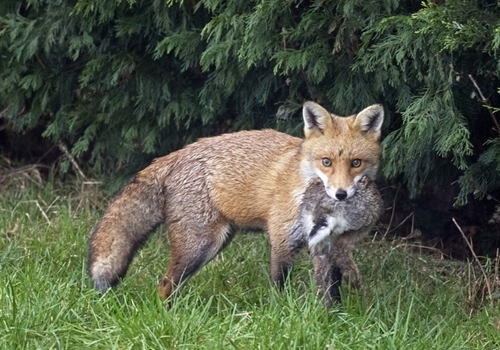
By James Swyer, GWCT Head of Membership & Marketing
A recent report published by The Ferrater Mora Oxford Centre for Animal Ethics, Killing to Kill, focuses on the morality and ethics of predation management on Scottish grouse moors. The report was commissioned by the League Against Cruel Sports, although the authors, all three of whom are theologians, are keen to point out their independence from the organisation.
Within the report, the authors make several judgements on the morality of controlling predator species, which anyone is welcome to do, but the ecological observations that inform them are questionable and, in many places, entirely incorrect. We have already written to the Times, who covered this report, but wanted to flag a selection of examples which show how, by studying the peer-reviewed science, the authors might well have come to a different conclusion.
It is concerning that this document, presented as an academic report, might influence the public or policymakers when the authors have failed to consider many of the core texts within the subject area, either to help form their arguments or to check the accuracy of their claims.
Example 1 – DOC Traps
The report makes many bold claims about DOC traps, the spring traps designed by New Zealand’s Department of Conservation. Despite acknowledging that the traps meet international trapping standards, for which there is rigorous testing, the authors state that “How reliably this trap kills within 45 seconds is currently unknown, at least there is no independent data to establish how effective these devices are” and claim that it is ‘far from clear’ if the trap always works effectively.
Further to the results of independent testing, this 2018 paper published in Animal Welfare, concludes that “The test results of the DOC 150, 200, and 250 traps show that these traps kill very quickly and may, in a significantly high number of instances, meet the ideal performance of achieving almost instantaneous unconsciousness.”
Example 2 – Conservation Benefits
On page 29, it is claimed that “Although the pro-shooting industry promotes the idea that “predator control” is necessary for conservation, they have failed to produce compelling data in support of this claim.” This claim is possibly the most staggering of the lot. If the authors had consulted the peer-reviewed scientific literature, they would have found plenty of examples. There are numerous papers on the impact of predation on the breeding success of capercaillie, for example, such as this, this, and this.
Example 3 – Non-target Species
The authors also state that “As many as 39% of all animals caught are non-targeted species, some of which include protected or endangered species, such as badgers, hedgehogs, pine martens, capercaillie, and birds of prey.”
This figure comes from another LACS-funded report, published in 2020, in which one of the authors identified species caught in rail traps in Scotland. The 39% figure relates to 24 of the 61 species they identified across 712 rail traps and, importantly, badgers, pine martens, capercaillie, and birds of prey do not feature on the list of species they identified. Where this claim comes from is unfounded.
Example 4 – Reading the Research
The authors are confident enough to assert that “it is impossible but to conclude that “predator control” measures cannot be either scientifically or morally defended by the argument from conservation.”
Focusing again on the scientific argument, there is no consideration for the published literature on the topic whatsoever. In addition to the above examples, no GWCT paper features in the report’s references.
The authors could have referred to this 2022 paper, the title of which, Lethal Predator Control on UK Moorland, is associated with high breeding success of curlew, a globally near-threatened wader, should be enough to refute their claim.
Furthermore, we have had papers published on the role of predation management and waders in Scotland, for grey partridges, songbirds, brown hares, and many other species. If, for some reason, the authors chose to discount GWCT’s independent peer-reviewed research, they could have read and referenced studies by others about the benefits of controlling mink to support waders, the influence of grouse moor management on non-target species and a broader study of predation as a limiting factor for bird populations.
There are other examples within the report that deserve comment, but these four examples show how important it is not to take a report at face value without considering the wider context. We are happy to challenge any misinformation that might influence the public or policymakers in the hope that all decisions can be made with the evidence in mind.
The stakes are too high to make ill-informed decisions. We don’t have to speculate; we can look to other countries that have restricted predation management to an even greater extent than the UK. Despite huge resources being put into habitat improvement in the Netherlands, efforts in the north of the country to save the black-tailed godwit – Holland’s national bird – are failing principally due to the difficulty of getting special licences to control foxes and stone martens which exert intolerable predation pressure in areas where these iconic birds try to breed.
The UK’s red-listed species are losing ranges and their populations are contracting. To take away vital tools for their recovery could be a mistake that accelerates the decline of these vulnerable species when they need all the help they can get.